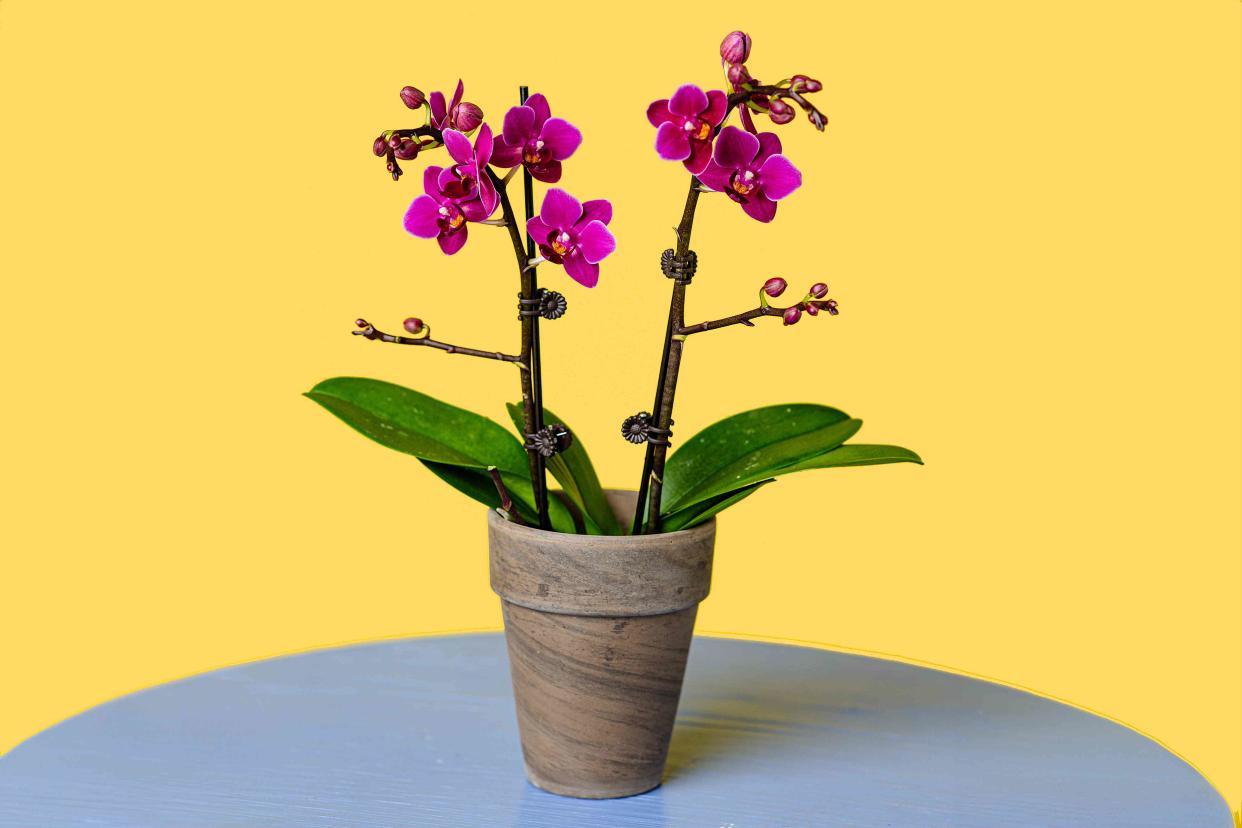The 2 Best Methods for Watering an Orchid, According to Experts
Plus, the best watering times.

Phamai Techaphan/Getty Images
Orchids are such beautiful flowers—whether they’re purple, white, or other hues like orange or green, they add a touch of vibrant color to any home. However, caring for these blooms can be challenging. In addition to proper potting, orchids require careful watering.
According to Virginia Hayes, indoor plant pro and retail showroom manager at Westerlay Orchids, orchids naturally grow on trees in the rainforest, so they like to be showered with water and naturally drained. However, growing orchids at home rarely mirrors this type of environment. This is why their maintenance requires thoughtful planning and care. Here, experts share their top tips for how to water an orchid.
Meet Our Expert
Virginia Hayes, indoor plant pro and retail showroom manager at Westerlay Orchids
Kaylyn Hewitt, lead floral designer and senior content manager of The Bouqs
Related: Orchid Care Tips to Help This Delicate Flower Thrive
The Kitchen Sink Method
One of the most popular methods of watering orchids is the kitchen sink method. Kaylyn Hewitt, Lead Floral Designer and Senior Content Manager of The Bouqs, says this method is the most beneficial if your orchid is in a potted mixture that includes bark. ”Fill your sink with lukewarm water to about the top of the grow pot—you do not want to submerge the whole plant—and let sit in the water for about ten minutes,” she instructs.
Note that soaking the pot for more than fifteen minutes can lead to root rot, according to Hayes. So, set a timer to avoid this problem. When time is up, remove the plant and let it drain out before placing it back in its decorative pot.
Hewitt notes that using watering orchids with tap water is fine, but if your tap water quality is less than ideal, you may want to use bottled water. She also advises avoiding distilled or very salty water.
The Watering Can Method
You can also water your orchid with a watering can or spray bottle. However, this shouldn't be your flower's only source of water, but to keep the flower moist between waterings. Hewitt says, “It’s a great tool to use throughout the week to keep the humidity levels and moisture in a great place for your plants.”
She adds, “If using a watering can, remove the orchid from your decorative pot and leave it under running water for fifteen seconds. Once saturated, leave to drain in the sink for an additional fifteen seconds and then place back in your pot."
Just keep in mind that the water needs to be poured carefully. “When using a watering can or spray bottle, be careful not to get the water on the orchid blooms. This can damage the bloom and cause botrytis (AKA mold),” says Hayes.
How Often to Water an Orchid
Generally, orchids need to be watered weekly, depending on the season and temperature. However, different types of orchids technically have different hydration needs, so it’s best to check which kind you have before creating a schedule.
Hewitt tells me, “Cymbidiums need a very moist environment, consistently. Water consistently and do not let the soil dry out between water. You do not want the plant drowning in water—just consistently damp soil. Letting the plant drain is the key to success here.”
Tips
Like most house plants, orchids are prone to being overwatered, explains Hewitt. “Orchids like dampness and humidity, but do not like to be drenched. When in doubt, let your orchid dry out and then water.”
On the other hand, she shares that Dendrobiums require a little less water, but still consistent watering every few days. Lastly, she explains Phalaenopsis needs a consistently damp environment. “Water these approximately twice a week or more in warmer or dry months.”
However, Hayes suggests looking beyond the watering schedule to ensure your orchid is properly hydrated. “Don’t just follow a watering schedule. Look at the orchid and its roots. Maybe some weeks due to a change in weather or placement in your house it may not need watering. Follow the guideline of the root color—if it’s white, water it. If the roots are green, let it be.”
Related: 10 Mistakes Almost Everyone Makes With Their House Plants
For more Real Simple news, make sure to sign up for our newsletter!
Read the original article on Real Simple.
